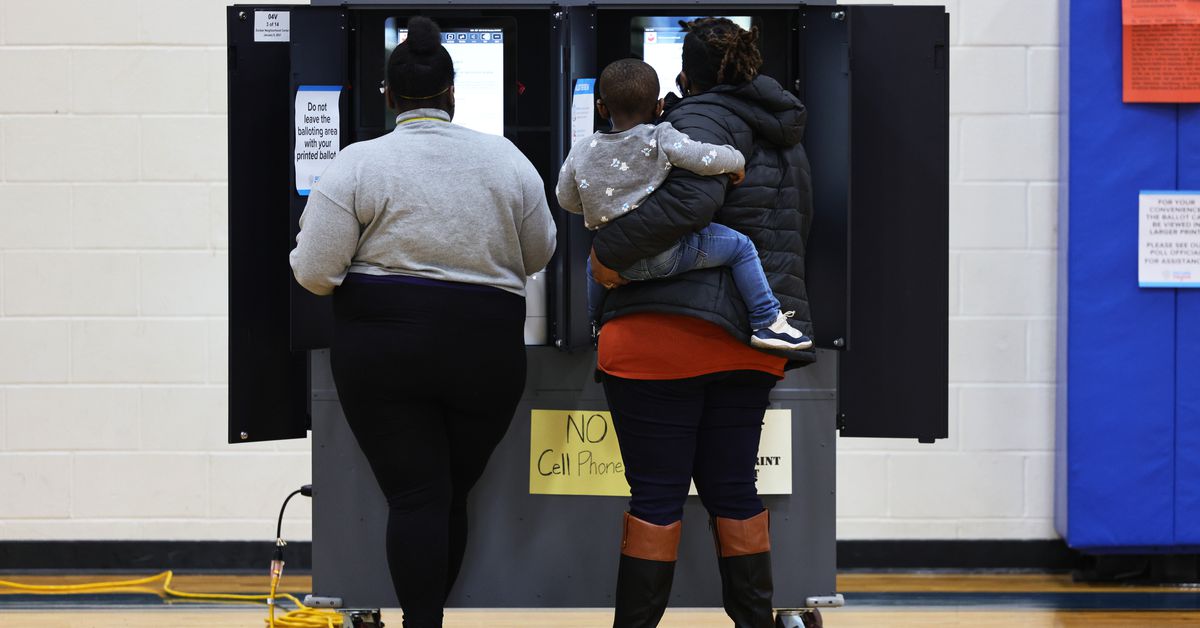The Battle Against Identity Fraud: Are You Prepared?
Spotting identity fraud is a big headache for companies all around the globe. According to a survey by Regula, 69% […] The post The Battle Against Identity Fraud: Are You Prepared? appeared first on ReadWrite.

Spotting identity fraud is a big headache for companies all around the globe. According to a survey by Regula, 69% of businesses are dealing with this issue. Here are some hot trends in identity document forgery that we, as a global developer of forensic devices and identity verification solutions, have recognized this year.

Which types of identity document forgery are in use?
Identity fraud has been around since the very first ID documents were introduced in the BC era. Fraudsters have a whole bag of tricks up their sleeves, which have become much more sophisticated over the years, but here are the basics:
Manual alteration. Legitimate documents issued by the authorities and stolen from their rightful owners get crafted by changing or wiping out some key details, like photos or names, right on the physical document. They might even insert some fake entry/exit stamps on passports with visas. These tweaked documents are often called forgeries. Сounterfeiting. These are fake documents made from scratch. To create a convincing passport or ID, fraudsters can reach out to unscrupulous individuals or companies that provide access to real stamps, holograms, ink patches, and UV-resistant paper. They might also use old, blank documents as their canvas. Computer simulation. In the digital age, fraudsters have multiple advantages. For instance, they are now able to create synthetic identities, which mix true data with fake – for example, a real photo with a fake name. Also, digital services let them easily create an ID card or driver’s license from scratch. The best (or worst) part is that it only takes a few minutes, and the end result can cost as little as $10 per item. Unfortunately, these DIY creations can sometimes fool specific identity verification systems.And here’s the real kicker: sometimes, these criminals mix and match these methods to create counterfeit masterpieces. So, it’s a bit of a wild world out there regarding identity fraud!
Criminal minds
When investigating fraud, it’s essential to adopt the perspective of the fraudsters themselves. Which criteria do they use when selecting which documents to counterfeit? Let’s take a closer look.
The money trail
In the world today, a curious paradox emerges. Fake IDs and passports are becoming big business, especially in countries like the United States, Canada, and Germany. You might wonder how it is possible and why, considering these countries are known for their strong security. There is a reason for that. Fake IDs and passports are most common in the most “desirable” countries, those with the highest level of welfare, generous social benefits and highest financial aid to refugees and migrants. The promise of social safety nets and financial support makes individuals turn to the illicit market for forged documents, seeking to reinvent themselves and secure the spoils of a more secure existence.
Cost of replicating
Countries that don’t have strong security measures in their passports and official documents often see more identity fraud and fake IDs in circulation. You can indirectly spot this trend by looking at how much it costs to get legitimate identity documents. For instance, William Russel, an international insurance expert, points out that an Australian passport currently holds the title for the world’s priciest travel document, coming in at a hefty $230 per issuance.
The cost of producing an identity document is influenced by the level of technological sophistication, which includes the security elements used and the complexity of the design. When multiple contractors are involved in its creation, such as designers, special paper suppliers, and printing services, the overall cost tends to rise.
This, in turn, affects the preference of identity document fraudsters when selecting a “model” to replicate. Take, for instance, the official Maltese passport, which can set you back up to $80 on the black market, or the even more affordable Bulgarian passport at just $20. These lower prices can indicate a lower security level than pricier identity documents. Consequently, both the Maltese and Bulgarian passports find themselves on the list of the most forged identity documents.
Customer need
The demand for specific types of documents also plays a significant role. Take, for instance, Qatar and the UAE, where there’s a high demand for construction workers. These countries attract a large number of migrants from less affluent regions like India, Nepal, and Bangladesh. Typically, these workers can secure short-term work visas, permitting them to stay legally for just 3 to 6 months. Consequently, there has been a notable increase in counterfeit passports and visas associated with these regions.
Most faked IDs
When it comes to the documents that fraudsters fake the most, regular old paper passports are still the top choice. It’s easier to manipulate the pages in a paper passport. But that doesn’t mean other types of documents are safe from identity theft. Experts at Regula have seen cases where fraudsters tampered with photos on plastic passports from countries like Finland, Sweden, and Norway.
These fake documents are mainly used to enter another country. For that reason, instead of just one fake document, fraudsters sometimes make a whole set that includes a passport, ID card, and driver’s license from the country they want to go to.
Protecting Against Identity Document Forgery: Best Practices
In today’s digital landscape, the risk of encountering fake or counterfeit ID cards, passports, or driver’s licenses in your customer verification process is a real concern. However, you can bolster your security and keep fraud at bay by implementing these strategies:
Prioritize authenticity
Fraudsters often focus on mimicking the visual appearance of legitimate identity documents, but they tend to overlook crucial details invisible to the naked eye. This is where identity verification solutions shine. For instance, many forged biometric documents fail RFID chip verification. While scammers manipulate visual elements like photos and names, they frequently neglect alterations in the RFID chip. As the most challenging component to counterfeit, the RFID chip should be one of your primary checks. Reliable tools can spot inconsistencies in the visual inspection zone, tiny alterations in MRZ codes, and missing security elements such as photos or lenticular images. This is where document readers play a vital role, and numerous authenticity checks are available for digital onboarding scenarios.
Employ a comprehensive identity verification solution
With the increasing shift towards online identity verification, fortifying your systems is crucial against potential vulnerabilities that malicious actors might exploit.
A well-structured identity verification solution typically comprises two essential components: one that operates on the user’s smartphone, and another on the company’s server. The user-facing component gathers data such as ID scans or selfies and transmits it to the server-side component. This server-side element then conducts a comprehensive set of authentication checks. This approach ensures that you assess users’ information in real-time, reducing the risk of relying on potentially tampered third-party data.
Embrace liveness checks
In the ID verification process, the solution must verify the liveliness and genuineness of both the document and the person presenting it. The reason is that fortunately, many attacks involving fake printed photos, video replays, or 3D masks can be detected through liveness tests when a user needs to turn their head or a document in front of the camera. That’s because fraudsters still struggle to deliver realism in liveness “3D” video sessions.
Monitor fraud detection signals
Detecting fraud now also involves evaluating signals, such as location intelligence or characteristics of the device employed during the identity verification process. In remote scenarios, tracking customer IP addresses and its patterns as they transmit data to company’s systems can be valuable. It’s important to stay watchful for sessions originating from uncommon geographical locations or repeated attempts from the same IP address.
Maintain an extensive database
Governments consistently revise identity documents to stay ahead of fraudsters. To spot counterfeit changes, your identity verification tool needs access to up-to-date document samples. This underscores the importance of maintaining multiple versions of each ID or passport in your database. Furthermore, a comprehensive document template database serves as a safeguard, reducing the risk of false positives when verifying documents issued from foreign countries.
In conclusion
As technology continues to evolve, fraudsters have grown increasingly adept at counterfeiting identity documents. Governments and law enforcement agencies are continually enhancing the security features of these documents to raise the bar for forgers. In response, businesses must maintain vigilance and implement essential measures to thwart identity fraud and theft. This includes rigorously verifying the authenticity of identity documents before accepting them as legitimate.
Inner Image Credit: Provided by the Author; Thank you!
Featured Image Credit:
Henry Patishman
As Executive VP of Identity Verification solutions, Henry Patishman is responsible for driving Regula’s strategic initiatives across different industries in the cutting-edge field of identity verification and biometrics. He helps organizations from aviation, hospitality, financial, telecommunications, and other sectors find ways to overcome challenges of digital onboarding, personal authentication and document fraud through innovative software solutions. Henry is an experienced leader with 20+ years of success in the IT industry, particularly in business process automation, digital transformation, security and data storage. He was instrumental in starting and growing businesses in the ANZ and APAC regions, as well as enhancing global strategic relationships with key customers and partners. Henry has held senior global positions at IT hardware vendors, software vendors, consultancies, distributors, and system integrators. Prior to joining Regula, he founded Cogitavi Pty Ltd, a Digital Transformation Consultancy, and has held senior roles at ABBYY, a global leader in intelligent automation, and ACA Pacific, a pioneer in the value-added distribution of specialized information technology solutions. Henry is a seasoned investor and advisor with countless successful entrepreneurial engagements in a variety of industries.

 MikeTyes
MikeTyes 
































